Introduction Dr. Jimenez, D.C., presents how Lyme disease can cause referred pain to the body in this 3-part series. Many environmental factors can cause numerous…


Introduction Dr. Jimenez, D.C., presents how Lyme disease can cause referred pain to the body in this 3-part series. Many environmental factors can cause numerous…

Mercury is a metal that used to be used in common fixes. However, over the years we are seeing that this metal is causing detrimental effects on our bodies. Mercury toxicity mimics many health challenges.Â
Mercury + NervesÂ
Mercury has been know to denervate nerve fibers. This is similar to the pathology of multiple sclerosis. Mercury can cause the nerves to not work properly. Our nerves are essential for proper function. The nervous system is related to every single thing we do. Additionally, mercury is able to leak into the blood-brain barrier and reduce nerve conduction. Mercury has also been shown to create peripheral neuropathy, auto-immunity, and interferes with synapse transmission, decreasing infection control so the unsuspecting victim gets recurrent sinusitis, prostate, or gum infections, as examples. Lastly, mercury toxicity can create any baffling neurologic disease as well as impair cure for any disease of other body systems.
Mercury + HormonesÂ
Hormones are another essential part of our daily life. Our hormones are released not only when we are happy or sad, but when we need to control essential functions in the body. Hormones signal other body systems to release chemicals. Mercury can inhibit the action of happy hormones, such as serotonin. It inhibits the binding at the synapse where the nerve connects to another nerve to pass along signals, ultimately leading to depression. Additionally, mercury can decrease norepinephrine and dopamine activity at synapses, damaging our molecules of emotion. This can make a person lack zip, enthusiasm, joy, and creativity and make him anxious, insomniac, and terribly tense.
Mercury + Other FactorsÂ
When we see someone who is suffering from mercury toxicity, they often complain of terrible body burning and baffling pain that migrates throughout. When our patients come to us saying that they have been resistant to other treatments, we check for mercury because the toxicity could be the underlying root of issues for them.
DNAÂ
Scientists have been researching and discovering the relationship between genes and our environment. More specifically, how our genetic background and susceptibility influence our outcomes. Specifically in the study by Andreoli, the genomic sequence and mercury-related outcomes.Â
“GENETIC VARIANTS, ENVIRONMENTAL RISK FACTORS AND DIFFERENT PERSONAL STRESSORS MAY INTERACT TO SHAPE THE REPERCUSSIONS OF MERCURY ON HUMAN HEALTH.â€- ANDREOLI, VÂ
We know that the human genome is comprised of millions of DNA sequence variants. There are gene-environment links focused on SNPs (single nucleotide polymorphisms) that play a role in mercury actions and outcomes.Â
Lifestyle ChangesÂ
One thing we do at our clinic for all our patients is run an InBody scan. While this scan does not check for mercury toxicity, it does check for visceral fat. Visceral fat is the layer of fat surrounding one’s organs. If the level of this fat is high, the individual is more susceptible to underlying health conditions and inflammation. Underlying health conditions, inflammation, and mercury toxicity is a recipe for disaster. Below is a video demonstrating more in detail what the InBody 770 (the machine we use at our clinic) is capable of.Â
[embedyt] www.youtube.com/watch?v=N3_BEhgJCGc%5B/embedyt%5D
IT IS AMAZING HOW MANY PEOPLE HAVE FILLINGS IN THEIR MOUTH THAT LED TO MERCURY TOXICITY. EVERY TIME SOMEONE EATS, DRINKS COFFEE, OR HAS AN ITEM THAT SCRAPS THESE FILLINGS, SMALL PARTICLES ARE RELEASED INTO THE BODY AND BLOODSTREAM. IF ANY OF THESE SYMPTOMS SEEM FAMILIAR TO YOU, I HIGHLY SUGGEST CONTACTING YOUR DENTIST TO SEE IF THE FILLINGS IN YOUR MOUTH CONTAIN MERCURY. -KENNA VAUGHN, SENIOR HEALTH COACHÂ
References:Â
Andreoli, V., & Sprovieri, F. (2017). Genetic Aspects of Susceptibility to Mercury Toxicity: An Overview. International journal of environmental research and public health, 14(1), 93. doi.org/10.3390/ijerph14010093 www.ncbi.nlm.nih.gov/pmc/articles/PMC5295343/Â
Dooley, Bruce. M.D. “551B: Mercurialism : Finding and Eliminating the Hidden Beast.†FunctionalMedicineUniversity. 12 Feb. 2021.Â
Rogers SA, Detoxify or Die, Prestige Publishing, Syracuse NY, 2002. www.functionalmedicineuniversity.com/public/903.cfm
Additional Online Links & Resources (Available 24/7)


Â
Online Appointments or Consultations:  https://bit.ly/Book-Online-Appointment


Â
Online Physical Injury / Accident Intake Form: bit.ly/Fill-Out-Your-Online-History


Â
Online Functional Medicine Assessment: bit.ly/functionmed
Â
Â
Â
Disclaimer
Â
The information herein is not intended to replace a one-on-one relationship with a qualified health care professional, licensed physician, and is not medical advice. We encourage you to make your own health care decisions based on your research and partnership with a qualified health care professional. Our information scope is limited to chiropractic, musculoskeletal, physical medicines, wellness, sensitive health issues, functional medicine articles, topics, and discussions. We provide and present clinical collaboration with specialists from a wide array of disciplines. Each specialist is governed by their professional scope of practice and their jurisdiction of licensure. We use functional health & wellness protocols to treat and support care for the musculoskeletal system’s injuries or disorders. Our videos, posts, topics, subjects, and insights cover clinical matters, issues, and topics that relate and support, directly or indirectly, our clinical scope of practice.* Our office has made a reasonable attempt to provide supportive citations and has identified the relevant research study or studies supporting our posts. We provide copies of supporting research studies available to regulatory boards and the public upon request. We understand that we cover matters that require an additional explanation of how it may assist in a particular care plan or treatment protocol; therefore, to further discuss the subject matter above, please feel free to ask Dr. Alex Jimenez or contact us at 915-850-0900.  Read More…
Dr. Alex Jimenez DC, MSACP, CCST, IFMCP*, CIFM*, CTG*
email: coach@elpasofunctionalmedicine.com
phone: 915-850-0900
Licensed in Texas & New Mexico
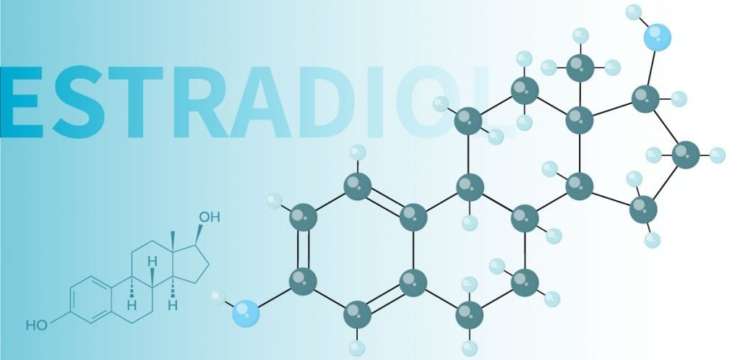
If we take a look at breast cancer, there are common roads that everything links back to. Those roads are an increase in estrogen or activation of the estrogen receptor in the mammary epithelial cell. This is important because there are triggers in our lives that have estrogen or stimulate estrogen production, ultimately leading to an increased risk of developing breast cancer.Â
FactorsÂ
Environmental factors like pollutants and stress are highly associated with breast cancer. For example, the pollutant xenoestrogen has estrogen-like activity. From here, when women age and move towards menopause, they produce more estrogen. When there is a relative increase in natural estrogen plus the pollutants sending the body false signals, we see a relative increase in estrogen and stimulation through the estrogen receptors in the body. A great way to decrease these pollutants and fake hormones is to switch to all-natural products. These fake hormones are being stored in products like:
Aluminum deodorantÂ
Body wash
ShampooÂ
Laundry detergentÂ
Air freshenersÂ
And moreÂ
The other factor mentioned above is stress. The stress that is being referred to in this instance is emotional stress. The type of stress we do not have as much control over (aka physical). The reason we take a look at stress is that stress leads to more cortisol being released throughout the body. More stress can lead to less melatonin production. Consider the fact that those with breast cancer have a decrease in melatonin. Over time, a decrease in melatonin results in an upregulation of estrogen receptors, leading to an increase in estrogen. Ways to help reduce stress include:
MeditationÂ
ExerciseÂ
GroundingÂ
Deep breathing techniquesÂ
DNA
As we have learned over the years, the DNA we are born with is not the DNA we die with. Yes, we are given a specific set of genes when we are born but our environmental factors have been proven to alter the expression of these genes. When we have a highly oxidized reactive molecule, it can adduct with DNA. This ultimately leads to DNA adduct formation that clips portions of our DNA out causing a mutation. Over time, with enough mutations, we can see patients develop cancer and their immune system is unable to fight it off as it no longer works properly.Â

Alzheimer’s disease is one that impacts many lives. There are multiple factors that go into the diagnosis of Alzheimer’s, some people’s diet, environment, genetics, head trauma and more. The classic symptoms include loss of memory, memory issues that begin to disrupt everyday life (such as where you keep your coffee mugs), difficulty completing familiar tasks in the workplace or home, confusion with time or place, and trouble understanding images.Â
Normal Aging vs Alzheimer’sÂ
With normal aging, we see brain atrophy, some neurotransmitter loss, and oxidative damage. These changes occur but they do not interfere with daily tasks or quality of life. To determine the difference, we can perform a simple test in the office that consists of a few questions. The score will determine if the aging of the brain is within normal limits.Â
Synapse LossÂ
As mentioned above, head trauma can lead to Alzheimer’s as it increases synapse loss. Things that contribute to head trauma include physical trauma, stroke, hypertension, and diabetes. Additionally, high cholesterol, high homocysteine, low exercise, and specific genes.Â
Genes
Although we are unable to change the genes we were born with, we can alter their expression. There are steps that we can take to alter these genes to express in a positive manner rather than negative. This can help slow down the progression or onset of Alzheimer’s. The genes we specifically look at in reference to Alzheimer’s are those that impact lipid metabolism, inflammation, and are dopaminergic and neurotrophic. These include:
CRP
IL-6Â
TNFAÂ
COMTÂ
BDNFÂ
We have the ability to perform genetic testing through DNA Life to assess your genes and your susceptibility. DNA Mind provides an identification of the level of impact of any genetic variant. It also provides us with a broken down explanation of the genes and their specific impact on the biochemical area and mental health. Additionally, this test not only reports on Alzheimer’s disease but also dementia, cognitive decline, addictive behavior, risk-taking behavior, and mood disorders. A sample report can be seen below:Â
Â
Lifestyle : InBodyÂ
As previously mentioned, we see a direct link between lack of exercise, poor nutrition, and Alzheimer’s disease. We are able to create personalized nutrition plans for your body as well as determine other predisposing factors with the help of the InBody 770 system. This advanced machine provides a great deal of information for us regarding the patient. We track patients Anthropometric measurements in order to determine their lean muscle mass, fat density, visceral fat (fat surrounding the organs- a key indicator of disease risk), water percentage, and height and weight. We measure our patients every 8 weeks and keep a detailed record. These reports are great indicators for health and also assess inflammation and edema. There is more information regarding the InBody below.Â
[embedyt] www.youtube.com/watch?v=N3_BEhgJCGc%5B/embedyt%5D
InBody_E_Book.pdf
GENETIC TESTING IS AVAILABLE NOW AND PROVIDES US WITH MORE INFORMATION THAN EVER BEFORE. WITH THIS INFORMATION AND THIS TECHNOLOGY, WE ARE ABLE TO CREATE PREVENTABLE PLANS GEARED TOWARDS YOU. I HIGHLY RECOMMEND GETTING TO KNOW AND UNDERSTAND YOUR GENES. -KENNA VAUGHN, SENIOR HEALTH COACHÂ
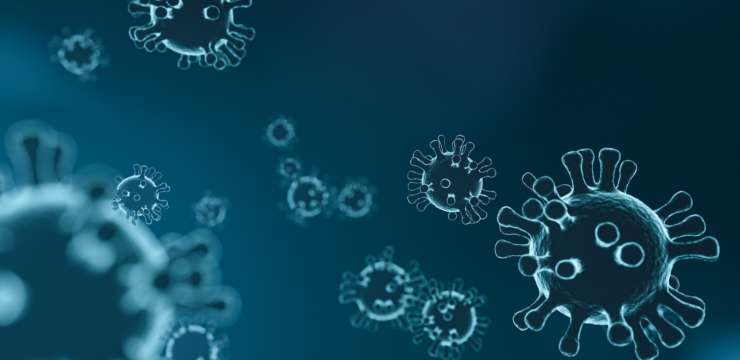
There are over 80 different autoimmune diseases. An autoimmune disease is when the body is so inflamed from the inside, it begins to turn on itself and begins to attack its own cells. What the body attacks determines what autoimmune disease an individual has. Some diseases that are associated with autoimmune conditions are Rheumatoid arthritis, lupus, and fibromyalgia.
Causes
There are different events and circumstances that bring on an autoimmune disease. It varies from person to person. However, it has been shown that environmental exposures are linked. Environmental exposures occur when we breathe in poor quality air and eat food that has been sprayed with pesticides and chemicals. It is referred to as an antigen overload.
Antigens
An antigen is a substance that enters the body. However, when this antigen enters the body the body reacts by producing antibodies. Similar to what happens when you get a vaccine. However, these substances that enter the body are not ones that we want a reaction to. Antigens can include things like toxins and bacteria.

Have you ever noticed that the human is the smallest newborn mammal? It turns out that we are born, and we are so immature that…

As we know, some individuals have a harder time regulating their mood and emotions than others do. This is highly connected to their genetic predisposition. Mental health falls under the neuropsychiatric disorder umbrella and accounts for up to 25% of all disability-adjusted life years. The genetic predisposition an individual has contributes to the risk of developing a mental health disorder. By using genetic testing, we have the ability to see if a patient is at risk for depressive disorder, bipolar disorder, anxiety, and PTSD. We use the DNA Mind test by DNA Life.
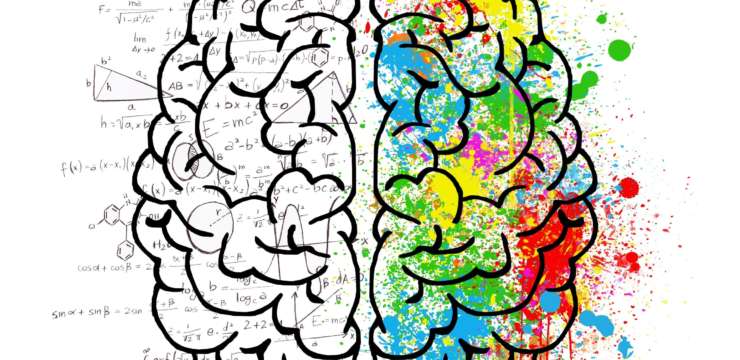
The human brain is extremely complex. Although responsible for many of our bodies capabilities, it has been known to cause extreme downfalls and disabilities if it goes awry. Neurodegenerative disorders include mild cognitive decline & late onset Alzheimer’s disease (LOAD). By using genetic testing, we are able to assess these genes and gain biochemical insight as to how to take our patients in a direction that is best for intervention and treatment strategies. The genetic test we use is DNA Mind from DNA Life.

Athletic success has a lot to do with our coaches, internal motivation, and time dedicated to the sport. However, it also has to do with our genetics. The athletic phenotype is complex and includes a variety of many different environmental factors. Genetic testing gives coaches and parents the ability to personalize training sessions, focusing on strengths and weaknesses. This allows them to truly have sport-specific training that uses their genetic potential to their advantage to optimize success. We use DNA Sport from DNA Life.

Growing up, there always seemed to be the kids in P.E. who were just naturally better at sports than others. Additionally, there were kids who seemed like they were always hurt. Genetics make up a large factor when it comes to athletic performance and recovery. Over the last few decades, research has emerged proving that athletic performance, training responsiveness, injury-related traits, and the ability to recover from a workout can be tailored down to the genetics of an individual. We have the capability to do a genetic test on individuals so that parents and coaches are able to learn more about the athlete and how to train them for optimal performance. Many parents take advantage of this test and use it to see the athlete’s weakness, therefore building them up and focusing on that area. This allows the athlete to have a better chance of success. We use DNA Sport from DNA Life.
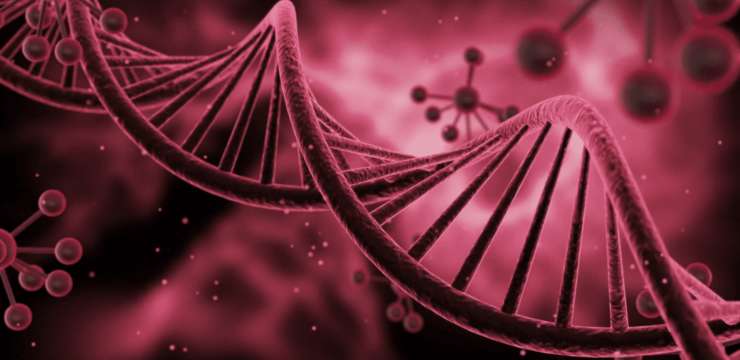
Males and females produce estrogen. However, females tend to have more complications when it comes to estrogen and hormonal issues like endometriosis, PCOS, and hormones that are linked to certain cancers. There are genetic predispositions that make some individuals more susceptible but we have the ability to use the DNA Estrogen test from DNA life to understand individual genetic availability with hormone intervention to help identify women who have a higher exposure to estrogen. Based on these results, we are able to create a truly personalized plan.

Nutrition is one of the most important aspects of life. Everyone eats at least one time a day and how we digest, taste, break down, and utilize that food is where our genetics come into play. Once we receive the test results from a patient, we review the genetic factors and predisposition they have. This allows us to create a science-baked personalized medicine program. This includes diet suggestions along with supplements. However, there are three potential diets that we recommend the most. Mediterranean, Low Carbohydrate, and Low Fat.Â

As previously discussed, our genes play a significant role in energy expenditure, appetite, and fat metabolism. Our genetics determine our susceptibility to obesity when exposed to an unfavorable environment. Additionally, we are also able to see how individuals will react to specific diets and exercises. We are able to use genetic testing to see a genetic profile and create a cutting-edge, scientifically backed, and effective weight loss plan for each patient. As we know, food consumption impacts our health throughout our entire life. With an unhealthy diet, turning on and off genetic risk factors, it becomes unhealthy and is a major risk factor for chronic health conditions. Nutrition-related conditions are often encountered and identified by chiropractors where musculoskeletal and inflammation is the origin.

Genetic testing has come a long way and we are now able to use it in our clinic. We have the resources to send a DNA sample from our patients to be assessed in order for us to create a truly personalized wellness plan. By taking these results, we are able to recommend a diet that fits the individual best for optimal health outcomes. Additionally, we are able to provide our patients with an insight into how their body absorbs and breaks down carbohydrates, saturated fat, and the optimal amount of exercise needed to lose weight.Â

The way our bodies respond to and break down food is being studied more and commonly linked to many chronic health conditions. The reactions we have to certain foods have been known to cause international permeability and over time leaky gut syndrome, leading to inflammation and autoimmune diseases. Not all food reacts the same way inside the digestive tract, some individuals are fine eating milk while others have digestive complications. Specific genes can be tested to provide a deeper insight to how someone might respond to a food component. To test an individual’s genes, we use DNA Health from DNA Life.

For an individual who is experiencing insulin resistance, the body’s cells have a lack of ability to respond to the action of insulin. Insulin is a hormone that removes glucose from the body and places it into our cells. Type 2 diabetes in certain families has been linked to a genetic background but we are finding that environmental factors truly unmask the genes.Â
To test genotypes, we use DNA Health from DNA Life. This report shows us the genetic makeup an individual has as well as their risk factors for certain health conditions.
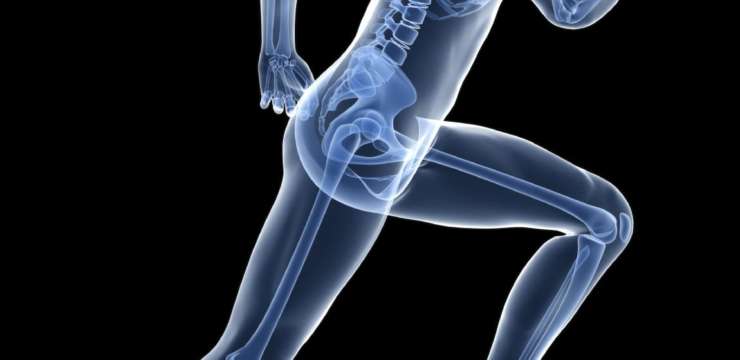
In order to have proper bone health, it takes a lot of focus and a lot of nutrients. Bone health is not only an important aspect when it comes to our structure but to our overall health in general. Our bones make and house bone marrow. Bone marrow is where every single blood cell in the body gets created. Without proper bone health, we see dysfunction in our blood, tissues, and other organ systems. Our genes have been associated with:
calcium homeostasisÂ
hormonal dysfunctionalÂ
osteoblast and osteoclast development and regulation
cartilage matrix metabolismÂ
lipoprotein metabolismÂ
Lifestyle and nutrition have a large impact on these genes as osteoblasts are driven out of control with sleep deprivation, stress, poor nutrition, too much caffeine (this will drive calcium into the urine, where it is not able to be used by the body), a lack of exercise, too much exercise, and inflammation.Â